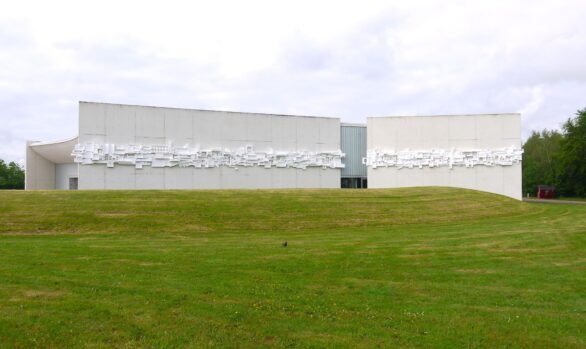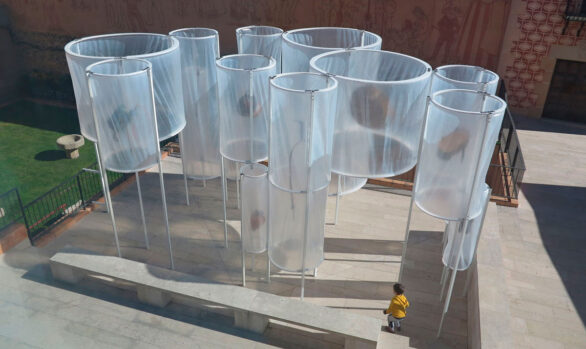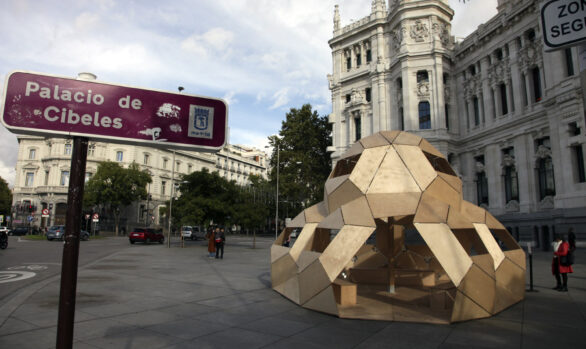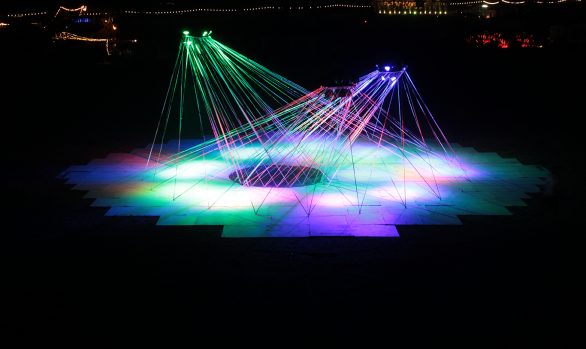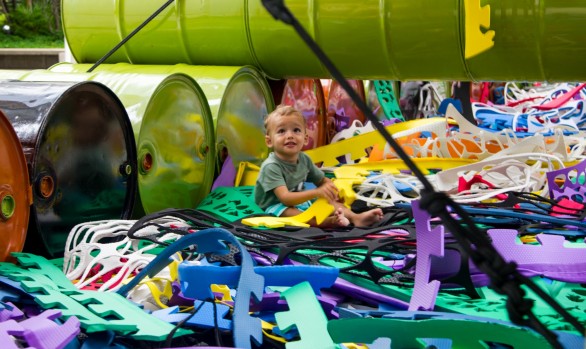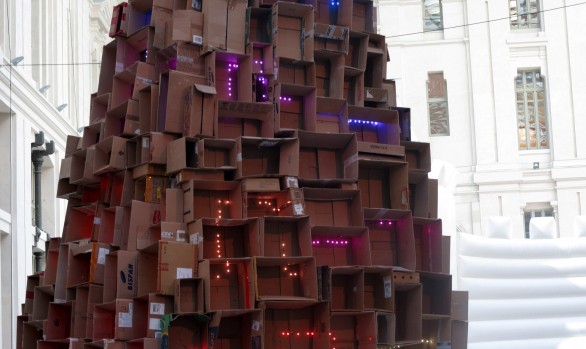Inhabiting Plastic Oceans.
In Love We Trash / InstallationInhabiting Plastic Oceans is an art installation designed and built by Basurama for the World Design Capital in Company Gardens, Cape Town during the month of November 2014. For the piece 240 kilos of plastic over 5.000 m of duct tape have been used together with 3 industrial fans to blow it up.
In Spain the garbage bag has radically changed in the last 30 years. While in the 80s our home trash was filled in with organic leftovers and broken items (furniture, clothes,….) nowadays the main waste substance in our bin is plastic, whether in the form of bags, bottles or packages. Their properties, their size and the easy way we dispose them make them instantly forgotten. But through each of those decisions and gestures we are actually feeding a monster of mythological dimensions.
In 2014 we were invited to create an installation for the World Design Capital Cape Town 2014 closure. South Africa is a country with 2500km of coastline and it is famous for its capes. Cape Point, in Cape Town, is the melting pot where two huge water masses come together: the Indian and the Atlantic Ocean. In recent years this two oceans have been invaded by one of the most non biodegradable contaminants: plastic. Recent studies show that plastic debris has increased a 90% over the past 10 years in South Africa. A large percentage of this plastic waste ends up in the oceans; and has concentrated itself on 5 vortexes causing enormous environmental problems, including the death of 1.5 million animals per year.
These figures are like mythological animals, abstract entities that we can hardly imagine. Inhabiting Plastic Oceans is an art installation that helps us to visualize through 3 habitable sculptures the dimensions of our consumption model. It does not only make it visible but it gives a dimension and makes it inhabitable. 3 cubes made out of plastic coming from recycling plants and that represent three scales:
- A cube 3x3x3 meters representing the number of bags that a Cape Town citizen takes home each year.

- A cube 9x9x9 meters that helps us visualize the plastic trash volume produced in Cape Town in one hour.
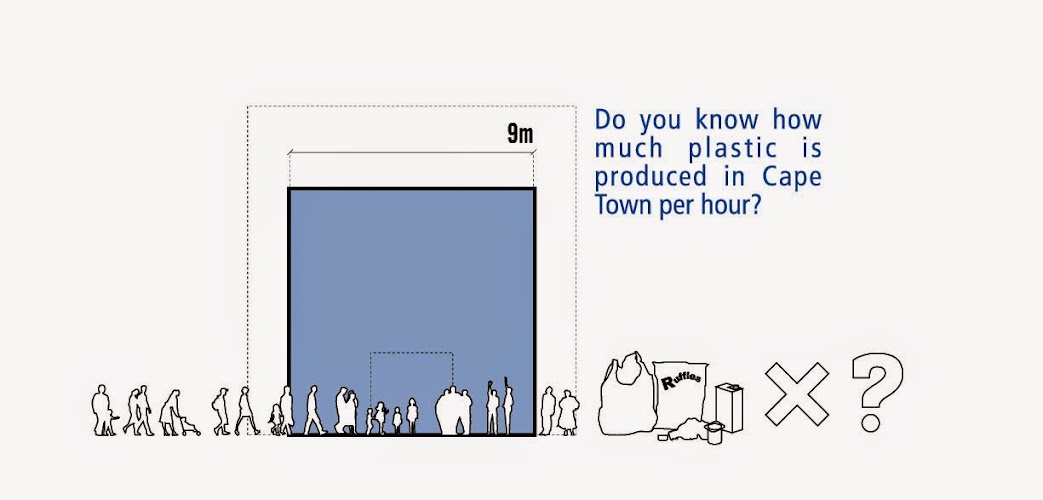
- A cube 12x12x12 (the height of a building of 4 floors) that shows the amount of compacted plastic that ends up annually in the ocean.
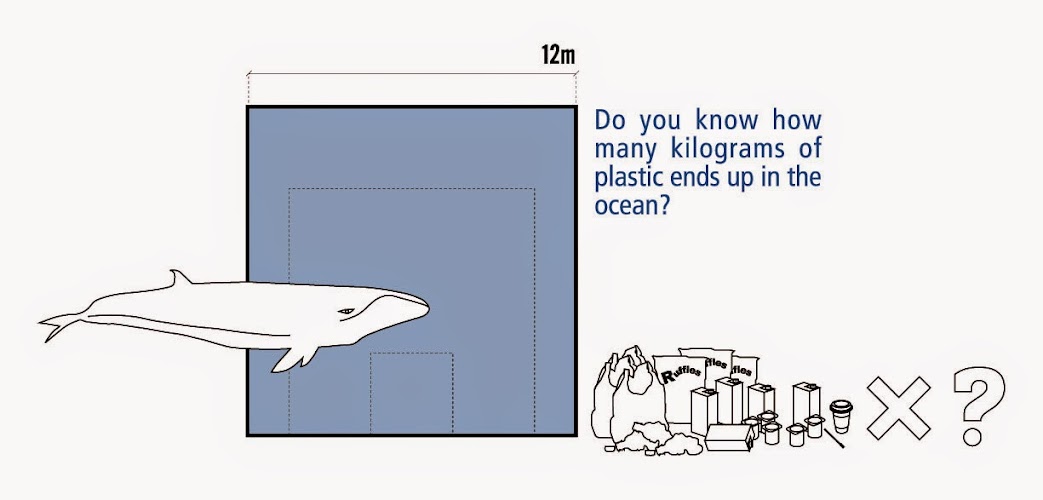
The structure of the cubes is basically air from 3 industrial fans that blow them up. But the installation comes to life in contact with the wind. The wind smoothly shakes the cubes and once you get into the sculptures you can feel the strength of its waving and changes in the surface. Inhabit Plastic Oceans allows us to plunge into the ocean of our own consumption through these three delicate and impressive sculptures. It helps us understanding the world that surrounds us and to be aware of it, but also helps us to imagine new scenarios and give us shelter to scape away from the landscapes we inhabit.
Inhabiting Plastic Oceans_1 (In Love We Trash Cape Town 2014)
Inhabiting Plastic Oceans_2 (In Love We Trash Cape Town 2014)

